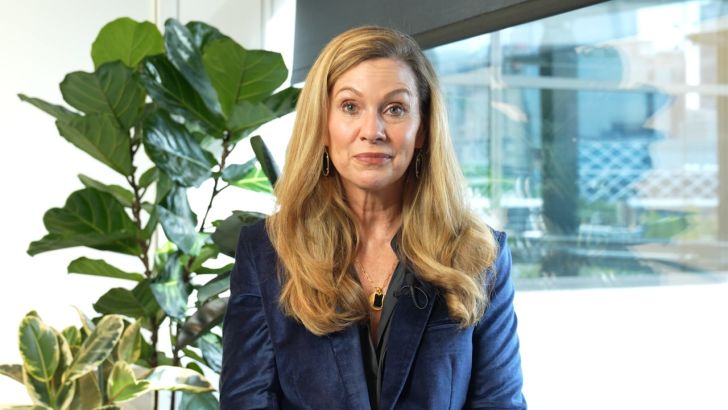Australia Sets 295,000 International Student Target, Rejects Hard Cap Label
This piece is freely available to read. Become a paid subscriber today and help keep Mencari News financially afloat so that we can continue to pay our writers for their insight and expertise.
Today’s Article is brought to you by Empower your podcasting vision with a suite of creative solutions at your fingertips.
Australia will target 295,000 international student commencements in 2026 under what Education Minister Jason Clare described Thursday as a “national planning level” rather than a hard cap, balancing universities’ financial needs with concerns about sustainable enrollment growth.
Clare defended the approach at a press conference in western Sydney, emphasizing that educating domestic students remains universities’ top priority while acknowledging international education’s economic and diplomatic value.
“The top priority of Australian universities is about educating Australian students. I make no bones about that,” Clare said. “But we also recognise that international education is important as well. It makes us money as a country. It makes us friends as a country as well.”
The minister, who represents the Blaxland electorate, rejected characterizations of the 295,000 figure as a cap, saying the government is instead establishing planning parameters to ensure system sustainability. The distinction reflects political sensitivity around international student policy amid broader debates about university funding and housing pressures.
“We’re not setting a cap. We are setting a national planning level,” Clare said. “But we do need to make sure that the system is sustainable, and that’s what the system we have put in place is all about.”
The allocation of additional international student places will benefit institutions including Western Sydney University and others across the country, Clare said. International education revenue has become increasingly important to university budgets as domestic per-student funding has declined.
Truth matters. Quality journalism costs.
Your subscription to Mencari directly funds the investigative reporting our democracy needs. For less than a coffee per week, you enable our journalists to uncover stories that powerful interests would rather keep hidden. There is no corporate influence involved. No compromises. Just honest journalism when we need it most.
Not ready to be paid subscribe, but appreciate the newsletter ? Grab us a beer or snag the exclusive ad spot at the top of next week's newsletter.
Clare announced the international student planning level alongside news that 9,000 additional domestic places will be allocated for 2026, representing a 4% increase that will push total university enrollment to record levels. The dual announcements reflect the government’s attempt to balance expanded access for Australian students with universities’ financial sustainability.
The Universities Accord, which guides the government’s tertiary education strategy, projects that 80% of Australia’s workforce will need certificates, diplomas or degrees by 2050, up from the current 60%. Achieving that target requires bringing more domestic students into higher education while maintaining international enrollment revenue that cross-subsidizes educational programs.
International students have become a political flashpoint in Australia amid concerns about housing affordability and community impacts in university neighborhoods. Some critics argue large international cohorts displace domestic students or strain infrastructure, while universities counter that international revenue is essential for financial viability.
The government softened its approach to international student numbers for next year, Clare acknowledged in response to questions. The 295,000 commencement target represents an attempt to provide planning certainty while avoiding the political costs of explicit caps that could damage diplomatic relationships or university finances.
Clare’s distinction between planning levels and caps reflects careful messaging on a policy area where the government faces competing pressures. Universities seek enrollment flexibility to manage finances, domestic students want guaranteed access, and some community groups advocate for restrictions.
The minister’s emphasis that domestic education is universities’ “top priority” signals the government’s political priorities amid concerns that international students might crowd out Australians. The allocation of 9,000 additional domestic places reinforces that message while the 295,000 international target provides financial breathing room for institutions.
Sustaining Mencari Requires Your Support
Independent journalism costs money. Help us continue delivering in-depth investigations and unfiltered commentary on the world's real stories. Your financial contribution enables thorough investigative work and thoughtful analysis, all supported by a dedicated community committed to accuracy and transparency.
Subscribe today to unlock our full archive of investigative reporting and fearless analysis. Subscribing to independent media outlets represents more than just information consumption—it embodies a commitment to factual reporting.
As well as knowing you’re keeping Mencari (Australia) alive, you’ll also get:
Get breaking news AS IT HAPPENS - Gain instant access to our real-time coverage and analysis when major stories break, keeping you ahead of the curve
Unlock our COMPLETE content library - Enjoy unlimited access to every newsletter, podcast episode, and exclusive archive—all seamlessly available in your favorite podcast apps.
Join the conversation that matters - Be part of our vibrant community with full commenting privileges on all content, directly supporting The Evening Post (Australia)
Catch up on some of Mencari’s recent stories:
It only takes a minute to help us investigate fearlessly and expose lies and wrongdoing to hold power accountable. Thanks!








